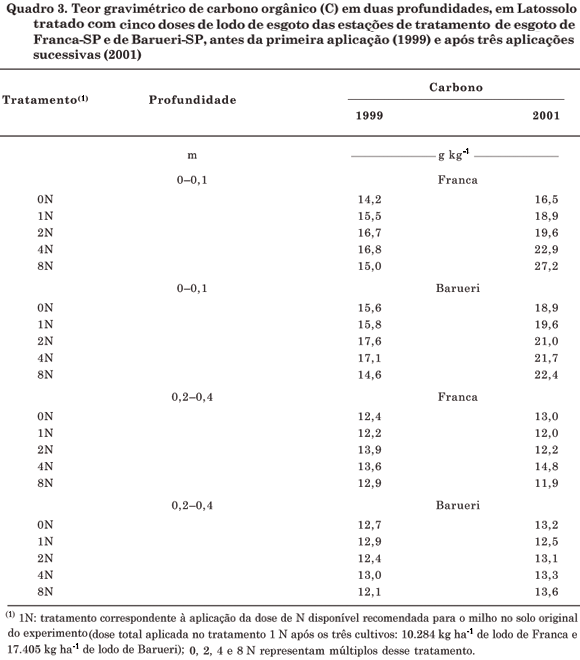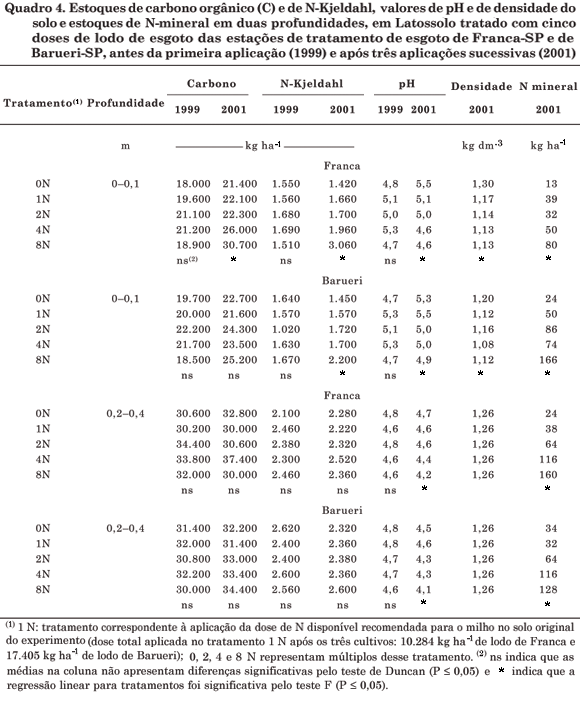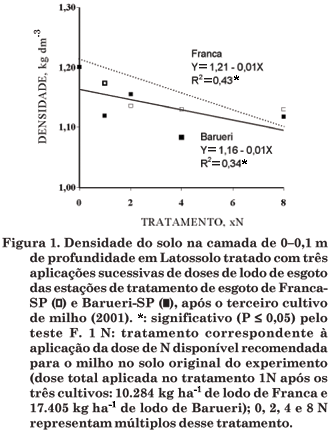The high organic matter content in sewage sludge is one of the reasons for its utilization as soil amendment. This study aimed to evaluate the effect of consecutive sewage sludge applications on the amounts of carbon, total and mineral nitrogen, pH, and bulk density in a Latossol. Two soil layers (0-0,1 and 0,2-0,4 m) were evaluated after three corn cultivations in Jaguariúna (São Paulo State, Brazil), between 1999 and 2001. The treatments consisted of three consecutive applications of two sewage sludge types, applied at five rates each. The increasing rates of urban sludge from the Franca sewage treatment plant (total applications of 0; 10,284; 20,568; 41,136, and 82,272 kg ha-1) caused significant accumulations of carbon and nitrogen in the top soil layer. The treatments with doses of industrial and urban sludge from the Barueri sewage treatment plant (total applications of 0; 17,405; 34,810; 69,620, and 139,240 kg ha-1) did not significantly affect carbon accumulation in the soil, although in these treatments C additions were 14 % higher than in the other sludge treatment. A significant increase in nitrogen accumulation was observed. Bulk density decreased significantly in the upper layer in response to the increasing application rates of the two sludge types. Soil acidification was observed in both soil layers, which made liming necessary after the second and after the third growing seasons. Leaching of mineral-N to the deeper soil layers was observed.
biosolid; agricultural recycling; solid residues; urban residues; soil bulk density






